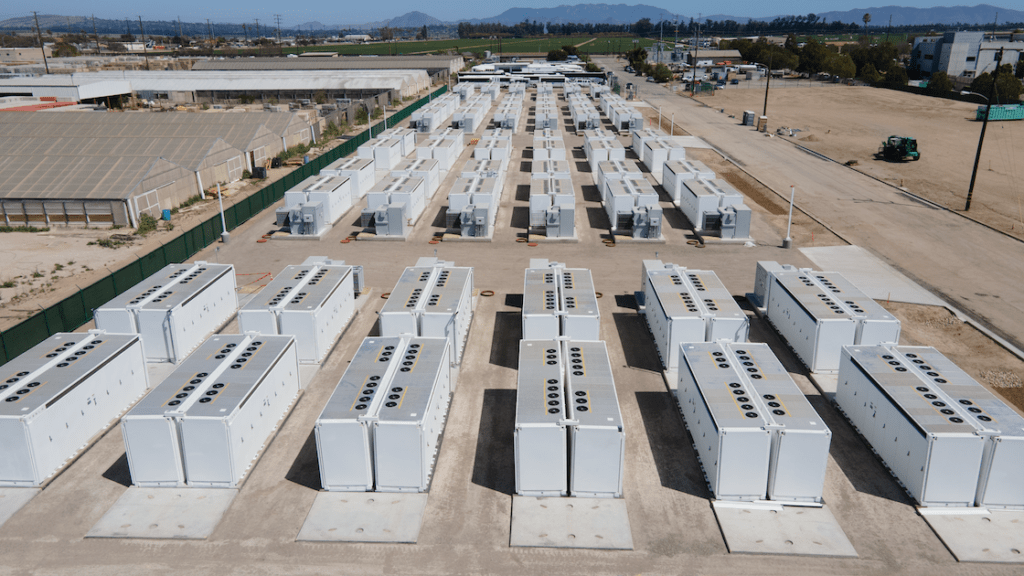
Research firm IHS Markit has said that 2021 marks the start of a continued period of rapid growth for the global energy storage industry, forecasting more than 12GW installations in total this year.
That’s 2GW more than the company predicted back in February, and more than 7GW bigger than 2020’s market size. Within three years, in 2024, the figure will exceed 20GW and exceed 30GW by 2030. This is broadly in line with recent forecasting from BloombergNEF of a 34.2GW annual market by 2030.
Interestingly, in Fluence’s recent Form S-1 filed with the US Securities and Exchange Commission (SEC) ahead of its planned IPO, the energy storage technology provider quoted BloombergNEF’s forecast. In doing so Fluence noted that it — and most other forecasts for the energy storage sector — understate the market size and opportunity.
This is because forecasts “generally only account for spend associated with the physical energy storage asset and do not account for the associated service and digital spend,” a section on ‘Our industry and market opportunity’ in Fluence’s Form S-1 reads.
Supply constraints are real, but won’t last longer than 18 months
This predicted rise in installations will come despite the tightening of battery supply chains, largely dictated by the growth in demand for lithium-ion cells from the electric vehicle (EV) sector. Despite the beginnings of bespoke cell production for stationary energy storage, something which was discussed by McKinsey battery expert Nicolo Campagnol in our recent webinar on battery costs, the same cells are widely used in battery storage as they are in EVs.
EV makers are increasingly also using lithium iron phosphate (LFP) cells for some of their cars in addition to higher energy density nickel manganese cobalt (NMC), for lower cost, shorter range vehicles. This was previously not the case and with LFP favoured by some stationary storage companies and their customers, this has exacerbated constraints.
The lower share of demand from battery storage versus EVs leaves the risk of shortages as manufacturers prioritise bigger and often longer-term orders from automotive customers over energy storage system integrators.
The increasing constraints could lead to delays in project commissioning and supply shortages. However, IHS Markit said that diversification in supplier base by system integrators and firming up of EV sector procurement plans mean that the disruption experienced will ease within a year and a half.
IHS Markit clean energy technology senior analyst George Hilton said that “delays associated with supply tightness have not yet led to any significant reductions in the outlook for the industry,” and with global supply of lithium-ion batteries expanding to meet market demand, IHS Markit “still expects [battery storage] installations to grow strongly”.
Policy will be a big driver for battery storage growth, with China recently announcing a 30GW energy storage target by 2025 — a significant portion of a total of 87GW of similar commitments at national level made around the world announced during this year.
These targets have set what IHS Markit described as an increasingly aggressive trajectory for the industry, necessitating new market opportunities to be developed and regulatory changes to be enacted to enable that trajectory.
“Increasing focus on the energy transition as a way of stimulating green growth has led to a flood of ambitious energy storage targets announced by governments globally. This has significantly strengthened our outlook for the industry as it becomes poised to start a prolonged period of strong growth through to 2030,” George Hilton said.
China’s target can make it the world’s largest energy storage market for annual installations by 2025, growing “significantly faster” than any other region; US and Europe installations are predicted to grow four times over and three times over respectively by 2030, but China’s could be 14 times higher in 2030 than in 2020, IHS Markit predicts.
In analysis published in April by rival research group Wood Mackenzie Power & Renewables, the Americas region was predicted to overtake the Asia-Pacific region in terms of deployed energy storage by 2025, accounting for more than half of all global capacity by 2030. However that forecast was made prior to China’s target — which covers non-pumped hydro energy storage technologies — being announced.
"continued" - Google News
October 06, 2021 at 04:25PM
https://ift.tt/3AfRv9f
This year 'marks the start of continued global expansion' for energy storage industry, IHS Markit says - Energy Storage News
"continued" - Google News
https://ift.tt/2WiTaZN
https://ift.tt/2YquBwx
Bagikan Berita Ini














0 Response to "This year 'marks the start of continued global expansion' for energy storage industry, IHS Markit says - Energy Storage News"
Post a Comment